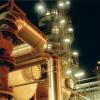Quote (What Went Wrong? 6th ed. by Trivor Kletz)
This is, or was at one time, the major cause of runaway reactions. After many years of safe operation, a chemical or a reaction mixture gets a little hotter than usual or is kept warm for a little longer than usual , and a runaway occurs. Today there is little excuse for such runaways, as many methods are available for testing both pure substances and reaction mixtures. They include acceleration rate calorimetry, differential scanning calorimetry, and reaction calorimetry. There are also methods for determining the size of relief valve, rupture disk, or vent required.
I am involved in design of 2-ethylhexyl nitrate facility which is known extremely explosive. Can anyone provide information how this chemical can be assesed as mentioned in quotation?
Edited by shvet1, 27 July 2020 - 10:37 PM.

 FB
FB











